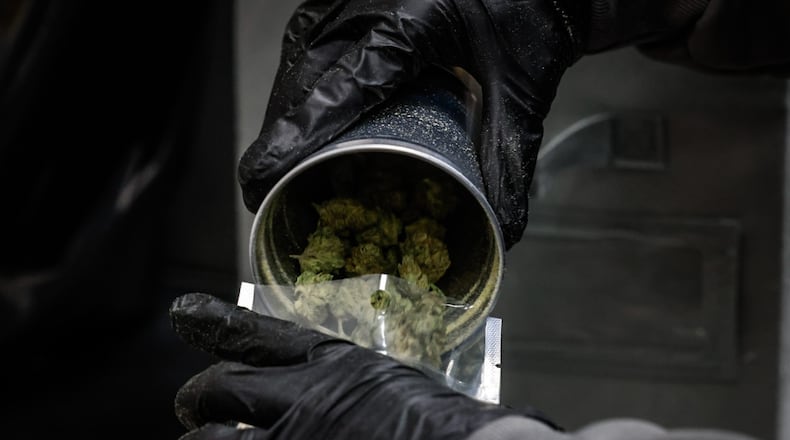“And by being honest, that can also include parents being honest with themselves about their own usage,” said Christine Murray, a licensed social worker and child therapist at Dayton Children’s Hospital.
Recreational cannabis sales in Ohio began last month, and adults 21 and older can legally buy and possess marijuana. The American Academy of Pediatrics does not recommend any person under the age of 21 use cannabis products, pointing to the impact of marijuana use on development.
“With marijuana, a lot of people feel like it is just fine and don’t realize all the complicating things that could happen with a child or teen’s growing brain,” Murray said. “Those kinds of structures and pathways in the brain developing at those times… it’s very different than if an adult started to use marijuana after the age of 25 or so.”
That’s a reason why national health experts say conversations about cannabis should start early, with parents outlining the risks of long term use on young people and other concerns they may have with cannabis.
Although children and teens are not legally allowed to use cannabis, the legalization of cannabis further normalizes it in society. And young people look at the actions of the adults in their lives and use those observations to determine what is normal and what isn’t normal, said Colleen Oakes, the manager of the Montgomery County Prevention Coalition.
Oakes said the most important thing parents can do is pay attention to how they themselves are using substances. This applies not only to cannabis but also to alcohol and tobacco.
“We really encourage our adults to model behaviors they want to see their children use by not using those products around their children,” she said.
In households where a parent or guardian may be legally using marijuana products themselves, other steps can be taken to establish boundaries and create healthy conversations about cannabis use, Murray said.
To start, marijuana products should be kept in a secure location, away from the hands of children and teens. If smoking occurs in a house, parents should also consider not smoking around their children and even changing their clothes after smoking.
Drawing distinctions between the impact of cannabis use on an adult versus a teen is also an important component of conversations about cannabis, as is talking about the risks associated with cannabis use.
Murray said that when parents are questioning their children about cannabis use, they should also try to come from a place of understanding and care — not condemnation.
“When you’re talking to teenagers, it’s not talking to them from the point of view of I’m going to catch you doing something wrong, or I want you to tell me so I can punish you,” Murray said. “You have to open the dialog and say, ‘Help me understand when you’re doing this. Help me understand why you’re doing this. Help me understand what other coping skills you might use to calm yourself down if you’re angry at something.’”
Teens, children and adults alike sometimes use cannabis or other substances as coping strategies, a behavior Murrary said isn’t healthy.
“Teens will say all the time, but it helps me calm down, but it helps me focus,” Murray said. “But something can feel good in the moment, but not be good for you.”
Parents should also outline limitations and expectations.
“Parents shouldn’t hesitate to say that’s not a substance they allow in their house,” Murray said.
Resources exist in Montgomery County for parents who want guidance on navigating difficult or uncomfortable conversations with their children. This includes the Safe Homes program, which helps families build healthy strategies to guide conversations about life choices, Oakes said.
About the Author

